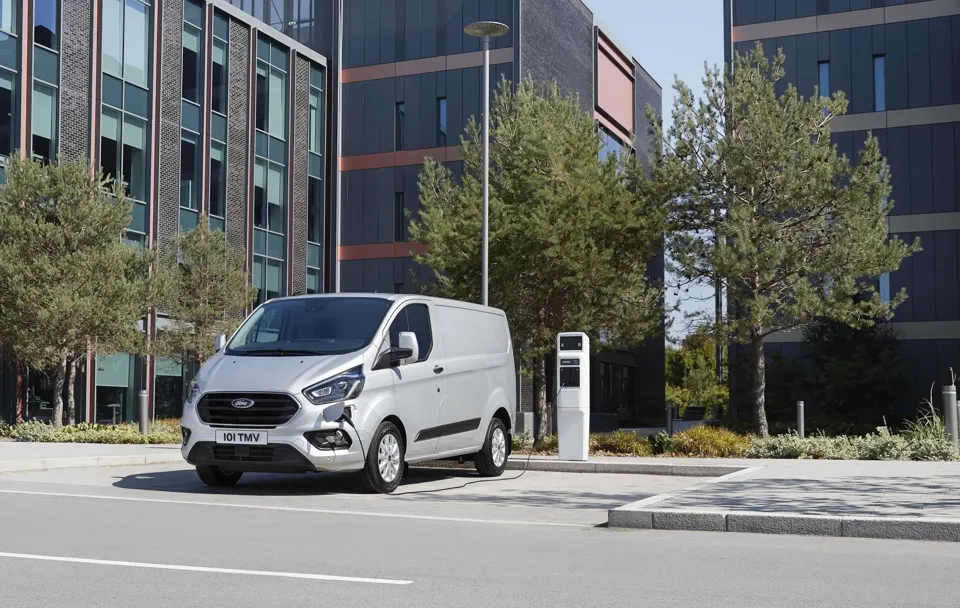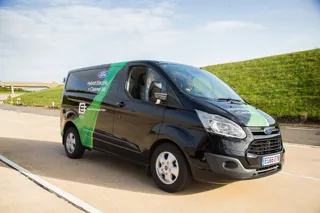Ford has introduced a new automatic electric mode for the Transit Custom plug-in hybrid (PHEV), which uses geofencing to ensure the van operates with zero-emissions in cities.
Using live location data, the Transit Custom PHEV vans will automatically switch to electric drive mode whenever they enter predefined areas such as congestion and low‑emission zones.
Vehicle operators can also create custom “green zones” to encourage low-emission driving around locations such as schools, playgrounds and warehouses.
When the vehicle leaves a controlled zone, it can automatically switch to the most appropriate drive mode to complete the next leg of the journey – for example, engaging the onboard EcoBoost petrol engine to generate electric power and extend the vehicle’s range.
“Improving the quality of air – and quality of life – in our towns and cities is a goal that we all have a responsibility to drive towards. The Transit Custom Plug-In Hybrid and its new geofencing feature helps our customers to make a real contribution to that goal without compromising on efficiency or productivity,” said Mark Harvey, director of Commercial Vehicle Mobility at Ford of Europe.
The Transit Custom and Tourneo Custom PHEV use a 13.6 kWh battery to deliver a range of up to 35 miles (NEDC). In both vehicles, the onboard 1.0-litre EcoBoost petrol engine can charge the battery on-demand to extend the range to more than 310 miles.
Both vehicles can be fully recharged in under four-and-a-half hours from a standard domestic mains supply, or in under three hours using commercial charging point.
A recent study by Ford concluded that hybrid-electric vehicles could help improve urban air quality, with 75% of miles driven in central London by study participants – which included operators Addison Lee Group, British Gas, Heathrow Airport, the Metropolitan Police and Transport for London –completed in the Transits’ zero-emission electric-only mode.
The geofence module in the Transit PHEV records information about electric-only operation within geofenced areas, referring to a virtual fence or perimeter around a physical location. The encrypted data can be shared with authorities to confirm compliance with low-emission zone regulations, avoiding the risk of wrongful fines and penalties.





















Login to comment
Comments
No comments have been made yet.